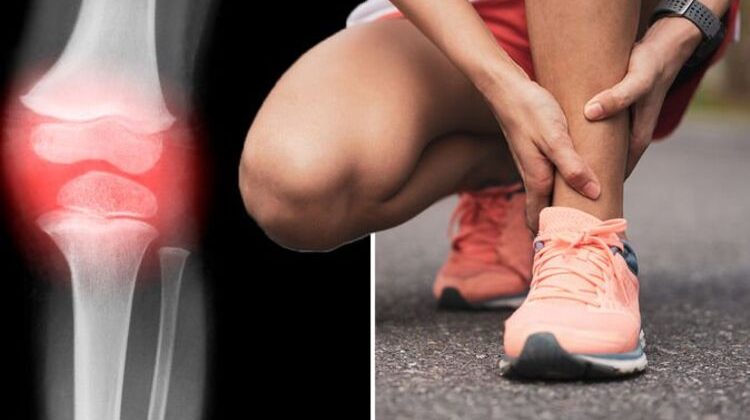Arthritis: 'No evidence' copper bracelets help says Dr Nighat
We use your sign-up to provide content in ways you’ve consented to and to improve our understanding of you. This may include adverts from us and 3rd parties based on our understanding. You can unsubscribe at any time. More info
Not all exercises are entirely beneficial as some can negatively impact the joints and hinder recovery.
Running and jumping are not recommended as these are categorised as high impact exercises due to the force exerted on the joints during the movement.
A 2019 study found that during running, each heel strike exerts a force up to three times an individual’s body weight on their feet.
With each strike the force moves up through the leg to tendons, ligaments, joints, and the bones inside causing pain and inflammation.

This isn’t to say that running causes arthritis or ruins the knees – this urban legend has been debunked through scientific research.
What it does mean is that if an individual has osteoarthritis, particularly in their knee, they shouldn’t necessarily be running.
Instead, low impact exercises such as cycling and swimming are safer as they exert lower impacts on the joints.
Other exercises that should be avoided according to research include forms of fitness that involve sudden changes of direction.
The reason is because these sports exert higher forces on the joints with a 2016 study published in the American Journal of Sports Medicine finding that “male athletes participating in elite impact sports are at an increased risk of developing hip OA”.
As well as highlighting the risk of repeated sudden changes of direction, the findings also added “those participating in high-level long-distance running do not have a clearly elevated risk”.
While running for the most part does not cause arthritis, the terrain on which a person engages in running or exercise could exacerbate symptoms of osteoarthritis due to the constant requirement to adjust the posture on every step causing the hip joints to work harder.
Should an individual relatively new to regular exercise want to increase their distance it is advised that they limit their initial explorations to smooth surfaces.

Away from exercise and losing weight, there are other treatments that can be recommended by your GP to ease the symptoms of osteoarthritis such as painkillers.
Arthritis causes increased pain and stiffness in the joints reducing a patient’s quality of life.
Paracetamol and NSAIDs (non-steroidal anti-inflammatory drugs) in conjunction with surgery and exercise can help reduce this pain by reducing the inflammation.
NSAIDS will only be prescribed by a GP if paracetamol is ineffective, and which one is used will depend on an individual case.

Other painkillers such as codeine are also used by doctors in the treatment of osteoarthritis.
However, some can result in uncomfortable side effects such as nausea and constipation.
As well as lifestyle changes and painkillers, supportive treatments such as physiotherapy and nerve stimulation are effective in treating the condition.
For more information on arthritis contact the NHS or consult with your GP.
Source: Read Full Article
